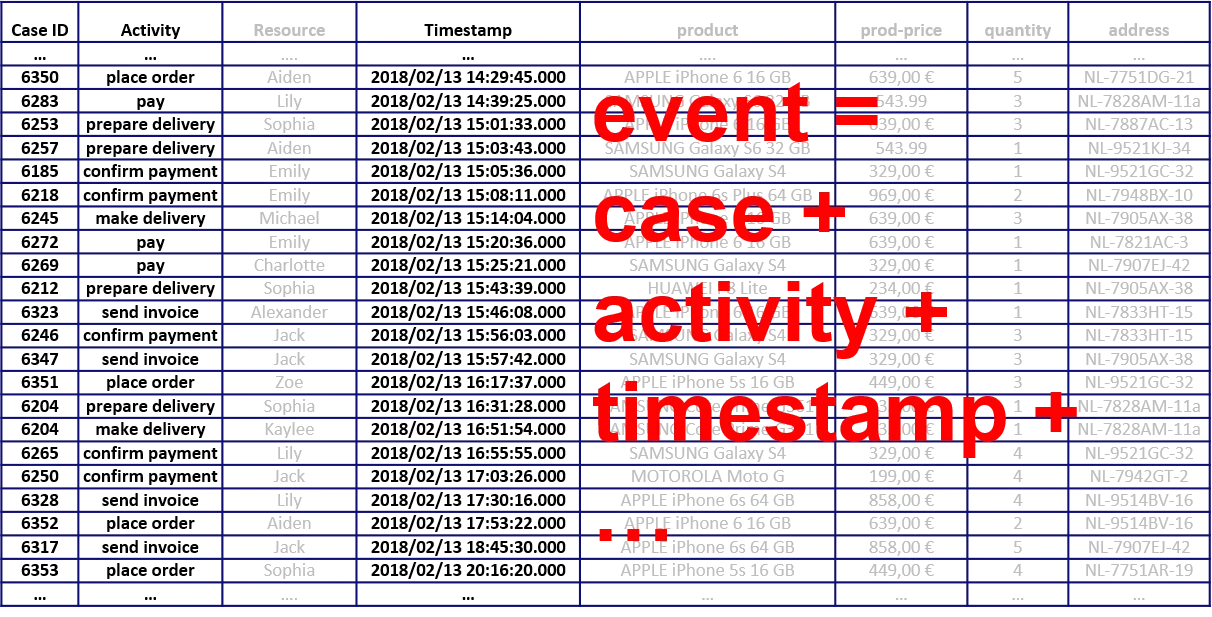The story
The process mining discipline emerged in the late 1990s at the Eindhoven University of Technology with the pioneering work of prof.dr.ir. Wil van der Aalst. Over time the discipline matured and today, there are over 35 commercial process-mining vendors and thousands of organizations successfully applying process mining. The IEEE Task Force on Process Mining and the open-source framework ProM played a key role in the development of the discipline.

An example

Starting business
Diane and her friends started a business selling handmade
products to local people in Aachen through an e-commerce
website. To boost the sale up, she decided to apply process
mining into her start-up.
Extracting data
First of all, Diane collects event data through her e-commerce
website. Event data consists of information about case ID,
activity, and timestamp, for example: on 13/2/2018 at 14:29:45,
Aiden placed an order with ID 6350.

Process discovery
With the collected data, Diane applies the process discovery
algorithms and finds out the actual process which is happening
inside her start-up.

Conformance checking
Having the process model, Diane can replay the event data on
this model to figure out if there are any deviations between the
real-life process (happening every day) and the ideal process
(from the model).

Performance analysis
Using process mining techniques, Diane can also discover the
bottlenecks occurring in her start-up. This way, she can find
out that the time for preparing deliveries and the execution
time for canceling an order too long.

More about Process Mining?
Check out the book
Process Mining: Data Science in Action, which is
considered as the "Process mining Bible".